#Japanese Green Woodpecker
Explore tagged Tumblr posts
Text

Picus awokera [アオゲラ,Japanese Green Woodpecker]
森の中、アカゲラの鳴き声が聞���えたので探していたら、アオゲラを見つけました💦 体中を蚊に盛大に喰われました。
24 notes
·
View notes
Photo


アオゲラ。 Japanese green woodpecker.
55 notes
·
View notes
Text

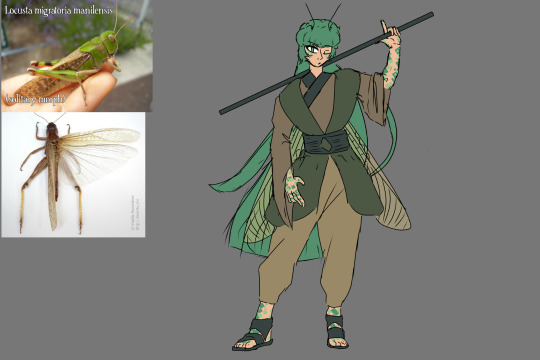

len'en ocs i made who have gay yaoi together more about them in the tags ……
#kel art#len'en#len'en project#red bird guy is named rike kizuki (キズキ李家)#theyre actually a japanese pygmy woodpecker#and can manipulate the levels of adrenaline#in other peoples bodies#the green locust guy is named masami watariba (渡場正美)#theyre an oriental migratory locust#they can remove the advantages of other people#in a gameplay setting#i imagine it working like#tsubakura is super fast#so if you play as them#their movement speed is lowered to about the same as yabusames#also rike cant make peoples circulatiry systems explode or something#they arent that strong#they like to say they can lol#and then they get scared#when they find anyone stronger than them#because they cant lie and say#that they can blow them up anymore#idk.. len'en for bugs
8 notes
·
View notes
Text


アオゲラ(Japanese Green Woodpecker)
150 notes
·
View notes
Text








Kodaira City's local sentai, Local Promotional Team Kodairanger!
Round Post Red - Themed after the red mailboxes in the city (or perhaps more specifically the giant version!) One of his signature moves is the “Post-in Warp,” which allows him to move from post to post within the city in an instant. His visor is the character "〒" or "postal service"!



Green Road Green - Themed after the Japanese pygmy woodpecker, the city bird. A nature loving hero who wants to make Kodaira City a greener place. His "Tamagawa-josui Jump" and "Green Road Finish" (which is a water burst attack apparently) both seem to be based on the Tamagawa Aqueduct :)


Blueberry Purple - Themed for—if you couldn't guess— blueberries, and more generally fruits and vegetables! One of her signature attacks is called Anthocyanin Breeze, which supposedly blows away the bad thoughts of opponents and turns them into good people...wouldn't it just make them purple, though? Maybe being purple makes you a better person.

9 notes
·
View notes
Text
Birds of Doriath (non Songbirds)
I have songbirds of Doriath here and my masterlist of environmental world building here!
Doriath is a region made up of a variety of forests. There is Region, a forest of holly and other mostly deciduous trees, Neldoreth, an ancient beechwood, Nivrim, a forest of primarily oak north of the twilit meres and finally Arthórien, a forest we have almost no information on, divided from the rest of the kingdom by the river Aros which runs along the Eastern border of greater Doriath.
Greater Doriath (Region and Neldoreth): black billed cuckoo, tawny owl, barn owl and subspecies, goshawk, sparrow hawk, wood grouse, common quail, common swift, moorhen (also found in Nivrim), little curlew, red kites, black woodpecker, green woodpecker, hoopoe (in clearings, glades and outskirts),
Nivrim and the twilit Meres: Barrow’s golden eye, ural owl and ural owl subspecies, northern hawk owl, wood duck, water rail, spotted crake, black stork, common golden eye, horned grebe, marsh harrier, tree kingfishers, merlin
Arthórien (markedly different climate): hill partridge, emerald dove, great eared nightjar, kiwi species, black wood pigeon, rain quail, grey headed woodpecker, Japanese scops owl, grass owl, white backed woodpecker, green pigeon, greater painted snipe (I’ll probably make a more thorough post for this entirely)
World building notes:
I’ve talked about this before but common and rain quails are domesticated for their eggs and meat, primarily by the marchwardens! There are little enclosures built in strategic locations between the temporary huts the marchwardens use between scouting and other missions. There are elves, usually younger ones who might be training as a scout or warden, who care full time for the birds. The quails live good long lives and are often named by their keepers. While in Doriath, Túrin saved four quails from being eaten out of spite
Nightjars and owls are considered sacred to the Silvan of Doriath who reside in Arthórien and appear frequently in song and folklore.
Water birds are most commonly found in Nivrim where ponds and marshlands make up part of the ecosystem. Their images appear upon the walls of Menengroth in the passages beneath the river.
Though birds of prey are not reviled by any means, depictions of the deaths of elves in battle or through other violent means are commonly represented as birds of prey killing songbirds
20 notes
·
View notes
Text
@luneyjuney asked me for my top 100 birds and i am extremely autistic so. here yall go
feral pigeon (if you even slightly know me you will be aware of this. i have a whole army of pigeon friends in my city and they are my favourite birds of all time)
wandering albatross (widest wingspan of all extant birds, fly incredibly long distances, hella cool)
sparrowhawk (so cool and also the name of the main character in earthsea)
african penguin (i became obsessed with them as a kid because i didn't know penguins could live in warm places)
great crested grebe (hella cool, also i saw one in real life a few weeks ago !!)
woodpigeon (they are always cooing outside my grandparents' house and it feels like home when i hear them)
bee hummingbird (tiny. adorable. the world's smallest bird)
nightjar (weird big mouths, i love them)
carrion crow (extremely smart and very emo)
magpie (they steal stuff they find on the floor, just like me fr)
mourning dove (name a better sound than the mourning dove's song, i'll wait)
green pigeon (my favourite colour and my favourite bird, what else do you want)
fairy wren (so small !! so cute !!)
tailorbird (they sew leaves together to make their nests, honestly the coolest thing ever)
turtle dove (pretty pretty pretty)
speckled pigeon (SO PRETTY AND I LOVE THEM)
little penguin (they look like babies !!!!)
barn owl (their faces are so lovely. i want to look like a barn owl in my next life)
spotted woodpecker (i saw one last summer !! i like the noise they make)
cockatiel (pikachu looking cheeks)
blue tit (they're so pretty and cute and i like their song !)
european robin (friendly little guys with pretty red bellies, and the loveliest song you've ever heard)
eurasian wren (small and round and the way they hop makes me smile)
collared dove (another beautiful pigeon-related bird)
kiwi (they have a special place in my heart thanks to a really sad video i watched in eight grade)
pekin duck (big and white with orange beaks and feet, very iconic)
gouldian finch (so pretty and i wanted to change my name to finch when i was younger)
emerald dove (green wings !!! and pigeon-adjacent !!!)
little grebe (just a baby. i have seen them a few times and they are so sweet)
mistle thrush (they're so beautiful !! i see them regularly in local parks)
wagtail (i like watching them perch around the river wagging their tails)
chaffinch (another lovely finch species !)
elf owl (world's smallest owl !!!)
bleeding heart dove (tragic in a beautiful way)
crowned pigeon (so beautiful, imagine a pigeon wearing the most splendid crown you've ever seen)
rosy-faced lovebird (couple goals fr)
coot (i like their funny webbed feet)
diamond dove (pretty !!!!)
orpington chicken (fluffy and big and make me feel cosy)
little owl (another tiny guy !!)
cockatoo (i made friends with one as a kid, she was so cool)
silkie chicken (so soft and beautiful)
hoopoe (i refuse to believe this is not a pokémon)
raven (big, black, smart, awesome)
mexican violetear (they're so pretty aaaa what shiny colourful feathers !)
great egret (majestic)
java sparrow (we studied them last year, it's funny how they are extinct in their native habitat but are thriving in their new temple homes)
mallard duck (the most common ducks that you see everywhere, i love them)
bowerbird (becky lemme smash)
house sparrow (cute little guys that live in the garden, we call them The Gang)
puffin (i like their beaks)
kakapo (big green potato bird)
potoo (they're so weird !! i love them !!)
grey heron (every time i see one it feels like a good omen)
red-crowned crane (the iconic japanese crane that i like to make origami of)
swallows (cool forked tails)
ringneck parakeet (they're so awesome !)
long tailed widowbird (longest tail you've ever seen, actually pretty ridiculous)
pochard (adorable little duck species)
peafowl (of course, i mean look at them)
mandarin duck (their plumage is so ornate !!! i see them in the park a lot !!!)
european starling (they're so common but so cool ! there's a family of them that live outside my window and i like to greet them every time i go outside)
fairy penguin (tiny tiny tiny)
bittern (pretty rare and make a great noise)
blue bird of paradise (exactly what it sounds like)
peregrine falcon (honestly these should be higher on the list they're awesome)
ruff (they have really interesting sexual dynamics, some of the males look exactly like females while others look starkly different, look them up)
oilbird (there's a picture of them with their mouths wide open in one of my bird books and it made me fall in love)
chiffchaff (they make such a cool noise, hence the name)
kingfisher (i think i saw one once as a kid, truly fantastic creatures)
red kite (i see them flying overhead sometimes, very cool birds of prey)
eastern bluebird (so pretty ! i wish we had them in the uk)
amazon parrot (hella intelligent and awesome)
frogmouth (i like frogs, and they look so goofy)
white emu (i saw one last summer, very cool)
grey parrot (apollo good bird !)
european blackbird (very common here, with a very memorable song. there's one outside my window that stays awake at night and sings to me when i get home late)
skylark (allouette gentil allouette)
blue jay (another cool species i wish we had in the uk)
waxwing (very pretty !)
mockingbird (they're so smart, they can mimic noises really well)
white hawk (the coolest hawk species in my opinion)
spoonbill (their beaks look like spoons)
nightingale (sang in berkeley square)
snow goose (the same reason i like pekin ducks; they just look so perfect, like yea that's a Goose alright)
chinstrap penguin (gay !!!!!!! look up roy and silo, you won't regret it)
cormorant (i like the way they display their wings, so magnificent)
house martin (they have a symbiotic relationship with humans, very cool)
sandpiper (i like the way they run)
tufted duck (cute little tuft on their heads)
fairy pitta (oh they are gorgeous)
great tit (they have regional accents, but they all have a two-note song which is very recognisable, there was one that sang nonstop in my parents' garden one year and we became quite fond of him)
shoebill (people say they're terrifying, but i think they're really cool, despite the creepiness)
blue footed booby (silly little guys that do a goofy tap dance with their bright blue feet)
red-billed scythebill (long ass curved beak)
ostrich (of course they had to be on the list somewhere, enormous speedy bois)
painted bunting (colourful and spectacular)
cactus wren (they make holes in cactus stems to live inside and keep cool ! very smart !)
harrier hawk (rather amazing bird of prey)
common swift (they're so fast, and i love watching them fly in the spring and summer)
#yea this was really hard#i love birds a lot and there are so many i couldn't fit on the list#also it's hard to order them because i love many of them an equal amount#but honestly this made my bad day so much better#bird list#binya and the birds
18 notes
·
View notes
Text
Species for: Haikyuu! PT.2
Seijoh/Aoba Johsai: Nobuteru Irihata: Anatolian Shepherd (Dog) Sadayuki Mizoguchi: Kangal Shepherd (Dog) Oikawa's Unnamed Ex-Girlfriend/Rika Makino: Russian Blue (Cat) Tōru Oikawa: Havana Brown (Cat) Issei Matsukawa: Calupoh (Mexican Wolfdog) Takahiro Hanamaki: Saarloos Wolfdog Hajime Iwaizumi: Belgian Malinois (Dog) Shigeru Yahaba: Akita Inu Shinji Watari: Shikoku (Dog) Yūtarō Kindaichi: Czechoslovakian Wolfdog Akira Kunimi: Japanese Chin (Dog) Kentarō Kyōtani: Tosa Inu Kaneo Yuda: Icelandic Sheepdog Motomu Sawauchi: Irish Wolfhound (Dog) Heisuke Shido: Kuchi/Afghan Shepherd (Dog) Shiratorizawa: Tanji Washijō: Black Egale Akira Saitō: Japanese Grosbeak Wakatoshi Ushijima: Peryton/Red Deer x Golden Eagle Jin Soekawa: Grey-headed Woodpecker Eita Semi: Carnaby's Black Cockatoo Reon Ōhira: Griffin/Barbary Lion x Black Stork Satori Tendō: Canis Mutt/Golden Jackal x Coyote x Red/Grey Wolf Mix x Herding Dog Mix Yunohama: Rufous Turtle Dove Tsutomu Goshiki: Pterolycus/Grey Wolf x American Kestrel Yu Shibata: Black Kite Kenjirō Shirabu: Mute Swan Taichi Kawanishi: Green Pheasant Kai Akakura: Brant Goose Hayato Yamagata: Peregrine Falcon Yūshō Sagae: Eurasian Wryneck Umeda & Suzuki: Eurasian Three-toed Woodpecker
1 note
·
View note
Text
***Bird Stamps
Japan – 2022 Letter Writing Day – Birds Japan – 2015 Japanese Crested Ibis Japan – 2021 Letter Writing Day Japan – 1992 Spotbill Duck China – 2014 Birds of Prey: Hawk of the Gentiles Finland – 2017 Long-tailed duck (clangula hyemalis) Finland = 2027 Velvet Scoter (melanitta fusca) Poland – 2023 Polish Post Russia – 2018 Se-tenant: Green Woodpecker – Great Spotted Woodpecker Niger – 1985…

View On WordPress
#asia#Bird#birds#birds of prey#black and white#china#duck#Finland#hawk#ibis#Japan#letter writing#Niger#peacock#poland#Russia#se-tenant#sparrow#three#velvet scoter#woodpecker
0 notes
Text
AOTD 1/26/2024 - In the End It Always Does (The Japanese House)
[All albums are rated subjectively based off my own enjoyment] 9/10
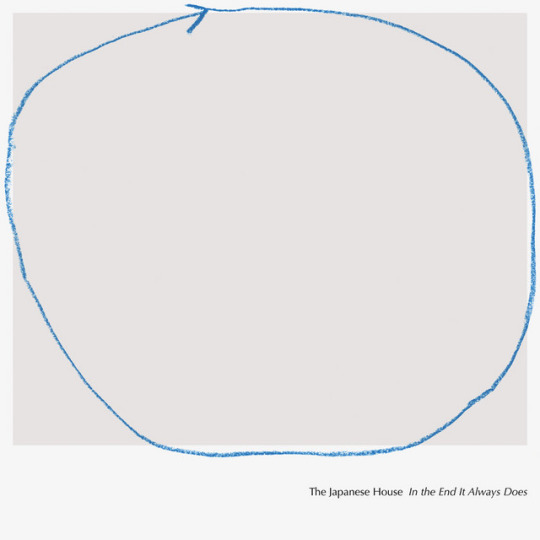
A rich, giant oak tree ecosystem teaming with life; mice scampering about the natural mulch, bluebirds and woodpeckers pecking and twittering among the branches, a family of racoons camping out on a low yet sturdy branch - All juxtaposed onto a bustling Futuristic Cityscape with just as many green groves as there are balconies on the high-rises. Organic Beauty and Life seamlessly teaming up with the populous urban landscapes that we call home.
In a paragraph, that's how I'd describe The Japanese House's In the End It Always Does sound. Rich, natural tamburs of guitars and strings slotted in flawlessly to an Electronica soundscape, with perfectly processed yet organic lead vocals towing the line between the two, and masterful songwriting, mellow and organic, to tie it all together. The production on this album was as shiny and sparkly as it was deep and rich. It had an almost Opioids feel to it with how much it drew me in and begged for me to stick around for a few hours of loop streaming. Hell, I still might after finishing this review.
My highlight for this album is without a doubt Boyhood. It's a bit more driven than the rest of the album, sporting a 4 on the floor kick beat and palm muted acoustic guitar driving the percussion, with some wonderful plucked guitars and synths making out the body. A set of relaxed, almost slurred vocal melody leads you through the track, with the chorus adding some subtle snare and hi-hat elements. The song slowly progresses adding and subtracting more minor elements as needed until it ends up at the solo, trading off seamlessly between a light, almost playful synth and a chirpy violin, playing back and forth like two birds twittering to eachother in the trees on a sunny spring day. This song is a masterclass in Micro-dynamics and Song Structure, and is absolutely the listen from this album.
I have no real gripes about this album. It doesn't fit my usual MO, but gosh-darnit when has that stopped me from enjoying these types of genres? I'm trying to expand my tastes, not shrink them back down. This album was a Bomb-Digity-Vibe to listen through, and I believe that you'll feel the same way. While I don't feel much value in listening through it from A to B, each and every song on here deserves your attention for at least it's runtime, and if you like it, whenever you feel the craving.
Overall, yeah I'd recomend this album. I don't anyone in my circle of friends that hasn't heard it that would enjoy it, but boy is this a top tier vibes album.
Favorite Songs: Morning Pages, Boyhood, Suneshine Baby, Baby goes again Least Favorite Songs: Spot Dog
Spot Dog - 6.5/10 Touching Yourself - 8/10 Sad to Breathe - 7.5/10 Over There - 8/10 Morning Pages - 9/10 Boyhood - 9.5/10 Indexical reminder… - 7.5/10 Friends - 8.5/10 Sunshine Baby - 8.5/10 Baby goes again - 8.5/10 You always get what you want - 8.5/10 One for sorrow - 9/10
0 notes
Text
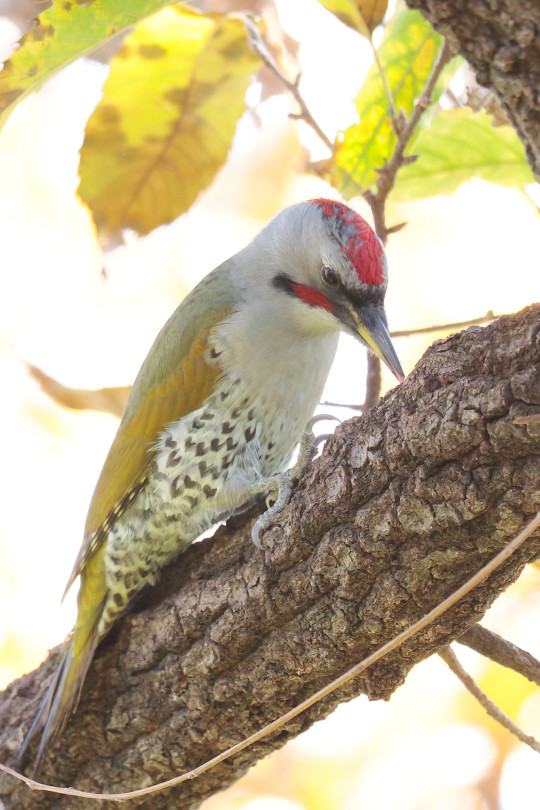
Picus awokera [アオゲラ,Japanese Green Woodpecker]
かなり近いところで、エサ取りに夢中でした。
75 notes
·
View notes
Text
Invasive Insects: Introduction
Invasive insects can be a threat to your lawn and home. In addition to disrupting or harming residential landscapes, many invasive pests negatively impact local environments if these insects spread and reproduce. Therefore, pest management is crucial to protecting landscapes and preventing these species from damaging lawns as much as possible. This article will highlight how these insects can spread and which species we will discuss in future articles.
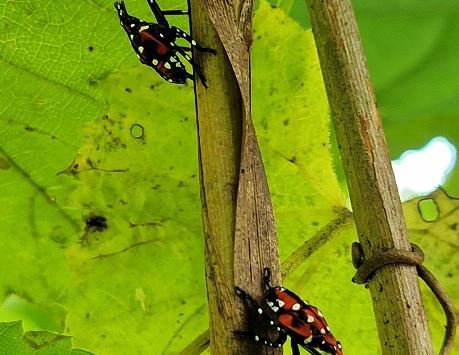
How Invasive Insects Spread
Insects can spread in several different ways. Some species can fly long distances, while others rely on the movement of infested materials such as plants or wood products. Movement of infested materials can involve humans or animals carrying them from place to place on their bodies or clothing and through contaminated food or water. In some cases, invasive insects may be carried along with other products, such as fruit trees and lumber logs, known as “hitchhiking.” Some invasive species may even travel across oceans by hitching rides on boats.
Spotted Lanternfly
The spotted lanternfly is an insect introduced to the United States in 2014, native to China and India, that has since spread to 14 states including Pennsylvania, New Jersey, Virginia, and Delaware. The spotted lanternfly feeds on various tree species, including fruit trees like apples and grapes and hardwood trees like maples and willows. This pest leaves scars on leaves by feeding on them, which can interfere with photosynthesis. Other damages caused by the spotted lanternfly include dead shoots at the ends of branches, dieback or defoliation, reduced tree growth rates, and increased susceptibility to disease outbreaks.
Emerald Ash Borer
An emerald ash borer is a metallic green beetle that feeds on ash trees. The insect was first discovered in the United States in Michigan in 2002 and has since spread to at least 30 states. Emerald ash borer has killed tens of millions of ash trees in the United States. The wood-boring beetle infests ash trees and feeds on the inner phloem, cambium, and outer xylem, causing crown dieback, bark deformities, D-shaped exit holes, woodpecker feeding holes, and yellowing foliage.
Japanese Beetle
The Japanese beetle is an invasive insect species that feeds on the roots of turfgrasses found in home lawns, golf courses, and athletic fields. This species of beetle has a striking appearance. The head and thorax are metallic green, the abdomen is metallic green with black spots, and the legs are dark green.
Balsam Woolly Adelgid
Balsam woolly adelgids are small wingless insects that infest and kill fir trees, mainly balsam fir and Fraser fir (common Christmas trees). The adelgid feeds on the tree’s needles, causing them to turn brown, die off and fall off the tree prematurely. Balsam woolly adelgids are native to Europe and were first detected in North America around 1900. Since then, they have spread across the United States and have caused extensive damage to mature stands of balsam fir trees.
Contact Burkholder PHC for Invasive Pest Treatment & Removal
If you are concerned about invasive insects harming your landscape and want to keep your property safe, contact Burkholder PHC. We provide a free evaluation from our highly experienced, qualified plant health care experts to help remove and control various invasive insect species and any adverse effects these pests may cause. Contact Burkholder PHC today for a free consultation.
Blog is originally published at: https://www.burkholderphc.com/invasive-insects-introduction/
It is republished with the permission from the author.
0 notes
Text
BRACKET A: FAVES
Pinyon Jay, Bridled Titmouse, Kirtland's Warbler, Dusky Seaside Sparrow, Gray Catbird, Gray Vireo, Rook, Smooth-billed Ani, Toulouse Goose, Pygmy Nuthatch, Blue Nuthatch, Rufous-collared Sparrow, Prothonotary Warbler, Channel-billed Cuckoo, Short-eared Owl, Whiskered Treeswift, Green Catbird, American Dipper, Common Ground Dove, Oilbird, Yellow-billed Magpie, Ferruginous Hawk, Grey warbler [Riroriro], African Penguin, Blakiston’s Fish Owl, Lesser Roadrunner, Great Bustard, European Pied Flycatcher, Bonin Petrel, Band-tailed Manakin, Pallas Sandgrouse, White-throated Magpie-Jay
BRACKET B: TRUE
Regent Honeyeater, Invisible Rail, Palawan Peacock-pheasant, Bald Parrot, Kagu, Azores Bullfinch, Capuchinbird, Zigzag Heron, Writhe-billed Hornbill, Blue-Capped Ifrita, Delalande's coua, Madagascar Ibis, Blue-headed Racquet-tail, Eurasian Three-toed Woodpecker, Glaucous Macaw, Goldie's Bird-of-Paradise, Red-Crested Turaco, Palau Kingfisher, Ribbon-tailed Astrapia, Great Argus, Kaua'i Mole Duck, Whiskered Auklet, Dulit Frogmouth, Naked-faced Barbet, Pink-throated Twinspot, Water Thick-Knee, Cabot's Tragopan, White-tailed Ptarmigan, Collared Nightjar, Sickle-winged Nightjar, Emerald Starling, Starry Owlet-nightjar
BRACKET C: PRETTY
Gouldian Finch, Violet Turaco, Red-tailed Black Cockatoo, Pompadour Cotinga, Pheasant-tailed Jacana, Wilson's Bird-of-Paradise, Purple-crowned Fairy, Painted Redstart, Western Bluebird, Golden Pheasant, Beautiful Nuthatch, Ochre-backed Woodpecker, Chucao Tapaculo, Bohemian Waxwing, Plumed Whistling-Duck, Lady Amherst's Pheasant, Bluethroat, Southern Emuwren, Shaft-tailed Whydah, Green Wood-Hoopoe, Plumbeous Redstart, Long-tailed Minivet, Japanese Paradise flycatcher, Purple Glossy Starling, Willie-Wagtail, Pink-necked Green Pigeon, Purple Honeycreeper, Red-cheeked Cordonbleu, Varied Bunting, Bearded Mountaineer, Scaled Fruiteater, Pink Robin
BRACKET D: FOUR
Hamerkop, Malayan Night-heron, Common Nighthawk, Powerful Owl, Short-tailed Pygmy-tyrant, Black-necked Grebe, Javan Myna, Dickcissel, Silver Teal, Streaked Weaver, Speckled Mousebird, Wedge-tailed Eagle, Jackal Buzzard, Bat Hawk, White-bellied Chachalaca, Bell Miner, Oriental Bay-Owl, European Shag, White-winged Tern, Ancient Murrelet, Helmeted Hornbill, Arabian Babbler, Oriental Stork, Bearded Bellbird, Seaside Cinclodes, Groove-billed Ani, Marvelous Spatuletail, Yellow-collared Macaw, Spotted Forktail, Hairy Hermit Hummingbird, White-tailed Trogon, Fiery-billed Aracari
Main Brackets!
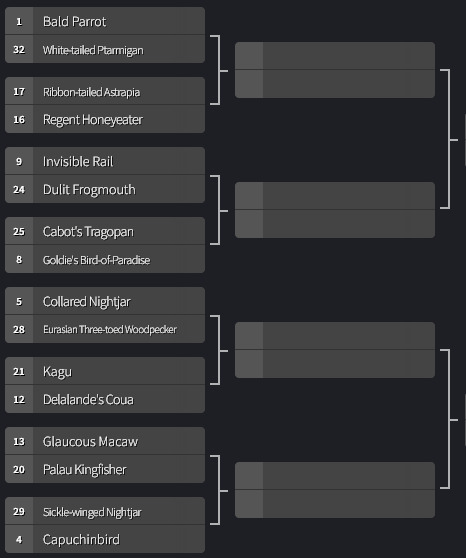
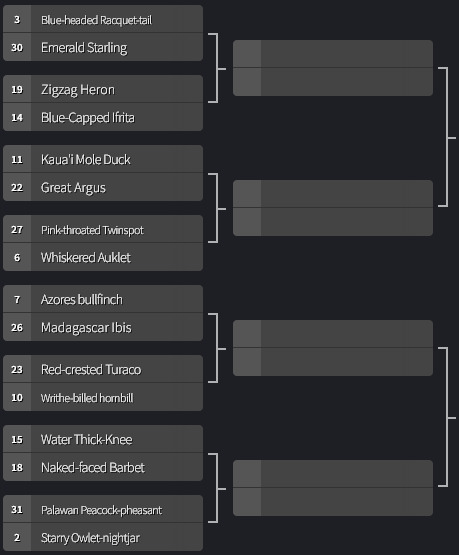

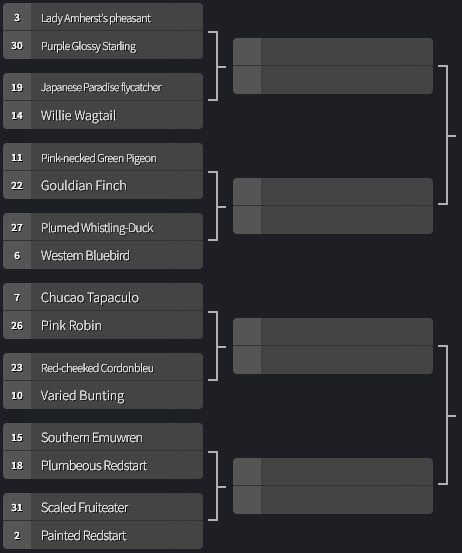
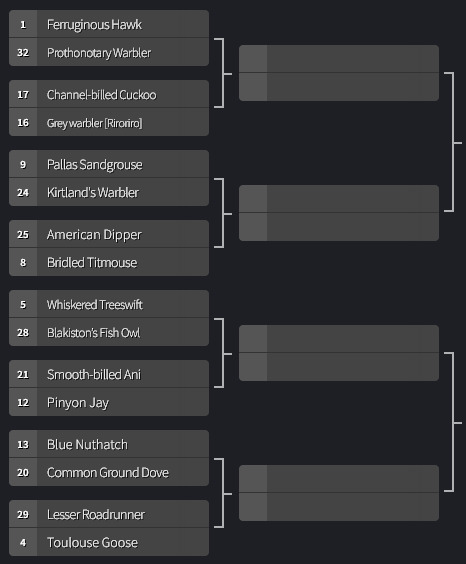
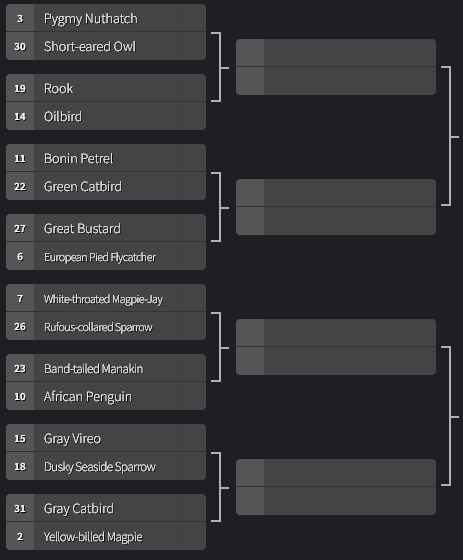
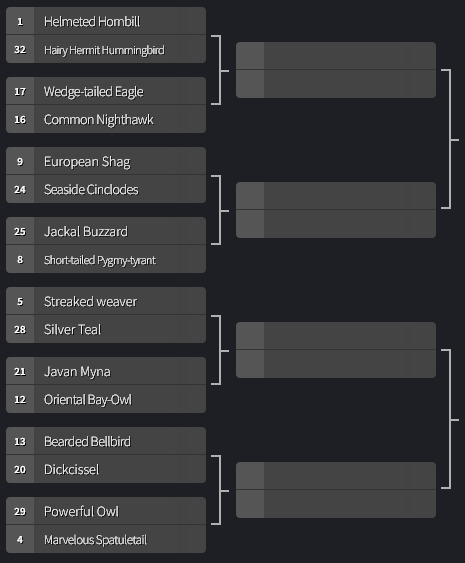
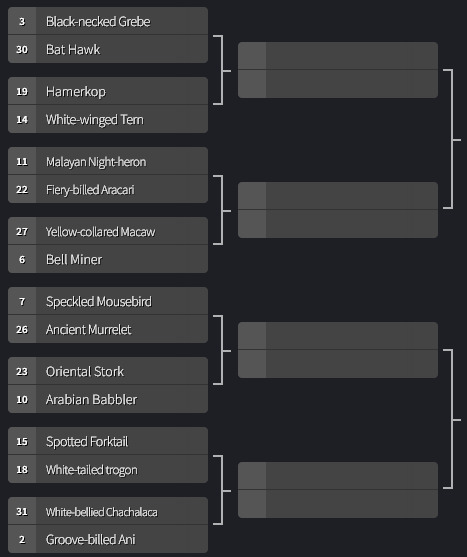
There are four brackets [Fave, Pretty, True, Four] comprising of 32 birds, for a total of 128 birds in this poll! I will reblog a version of this post with every bird listed via text within their bracket, so it is easier to find for those with image issues. It's gonna take a while to actually put the posts together for the first round, seeing as there are 64 battles happening, so expect the polls to go up around July 12th.
Below is a link for submitting any cool facts or info about the birds you want to win. It's not necessary to send info here, but I like to give the option to infodump about birds, and it helps with keeping things organized. As a heads up, the submission box is capped at one response only (with up to three birds in said response) just to keep things from getting cluttered.
As per tumblr etiquette, you are totally free to reblog the polls themselves with as much propoganda as you want. These submissions are just to help me fill the poll post with some cool facts.
54 notes
·
View notes
Text


アオゲラ(Japanese Green Woodpecker)
116 notes
·
View notes
Photo


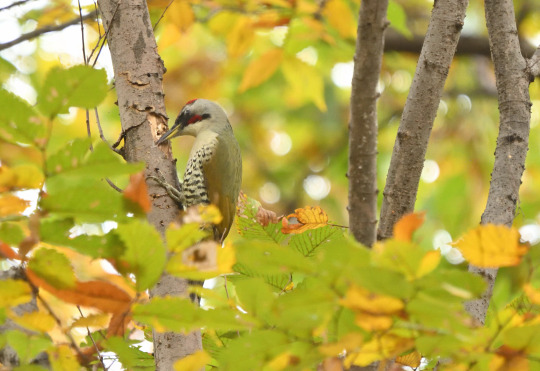



アオゲラ
Japanese Green Woodpecker
510 notes
·
View notes








